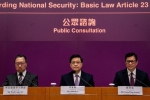Jaya Bordeleau-Cass and André Capretti are the 2019-2020 Public Interest Articling Fellows at Amnesty International Canada. They will be posting updates about the Safe Third Country Agreement hearing throughout the week.
The brief and frustrating answer: it’s unclear what it takes.
Submissions in the Safe Third Country Agreement (STCA) challenge continued to be delivered from November 4-8th at the Federal Court in Toronto. Earlier this week, counsel for the applicants – representing Amnesty International, the Canadian Council for Refugees and the Canadian Council of Churches, and other individual litigants – provided a general overview of the requirements for a safe third country designation, why it is unlawful, and why the operation of the agreement violates the security and equality rights of STCA returnees.
At its core, the STCA is a responsibility-sharing agreement for the protection of refugees. By designating the U.S. as a ‘safe’ country, the law requires that Canada ensure that the U.S. continues to protect refugees in a way that aligns with international human rights law standards, and that the situation in the U.S. is continuously reviewed.
In their submissions to Justice Ann Marie McDonald, counsel for the Government of Canada (the respondents) argued that STCA requirements have been met because Canada has conducted reviews of the U.S. based on an overall assessment of the situation and a “qualitative balancing”. But a balancing of what?
Without getting too deep in the weeds of administrative law, the big take-away from the arguments put forward by the applicants is that the current review process has no measurable tipping point: Canada has provided no defined standard of how bad the situation in the U.S. needs to get in order for the U.S. to no longer be considered a ‘safe’ country under the STCA.
During his submissions, Mr. Jared Will (counsel for the applicants), considered the evidence that the government did review, including the mandatory detention of refugee claimants returned under the STCA, the separation of children from their parents at the border, and the shameful and inhumane detention conditions faced by all returnees, including children.
Despite all the information in front of them – particularly as the situation went from bad to worse to unimaginable under President Trump’s administration – the Government of Canada still chose to maintain the status quo, refusing to acknowledge that the negative evidence has tipped the scales.
On top of this, nothing has been done to monitor what actually happens when refugee claimants are returned to the U.S. under the STCA: refugee claimants are sent back, and no questions are asked about what becomes of them. As Mr. Will noted, the overall approach of the Government of Canada “can be described as see no evil, hear no evil, speak no evil”.
On Wednesday afternoon, counsel for the government went so far as to say that even if faced with the hypothetical situation of the U.S. withdrawing from the Refugee Convention or the Convention Against Torture, Canada would not necessarily see this as a determinative reason to remove the designation of the U.S. as a safe country, since they could still in practice be meeting their international human rights law obligations.
Integrity is at stake here. How many detentions, family separations, incidents of violence or accounts of assaults are needed to see that this agreement is failing some of society’s most vulnerable individuals? Canadians deserve more from a government that claims to prioritize refugee rights.
The arguments presented in court this week suggest that, with no clear benchmark, and no way to gauge how “bad” is “too bad”, Canada’s reviews of the situation in the U.S. are meaningless and turn a blind eye to the fates of those returned to the U.S. under the STCA.












